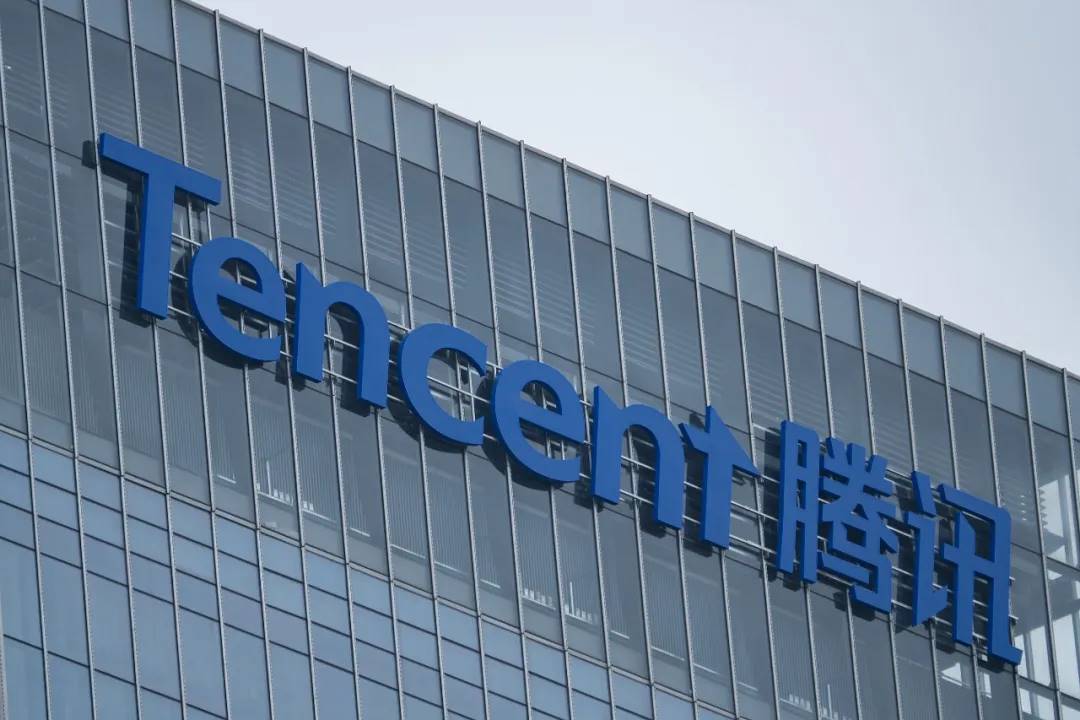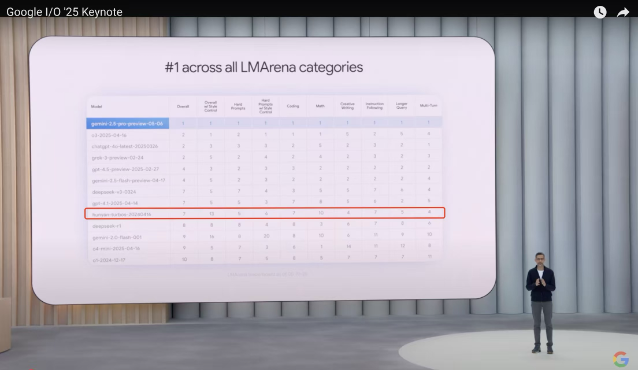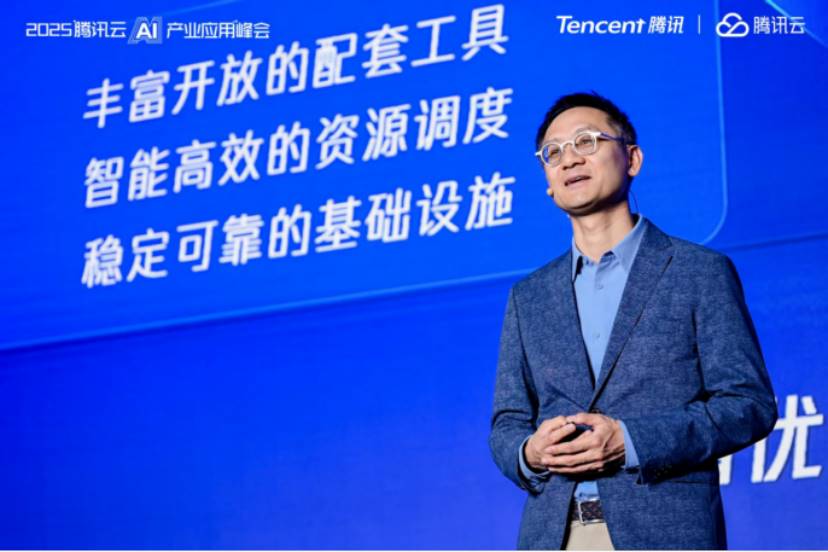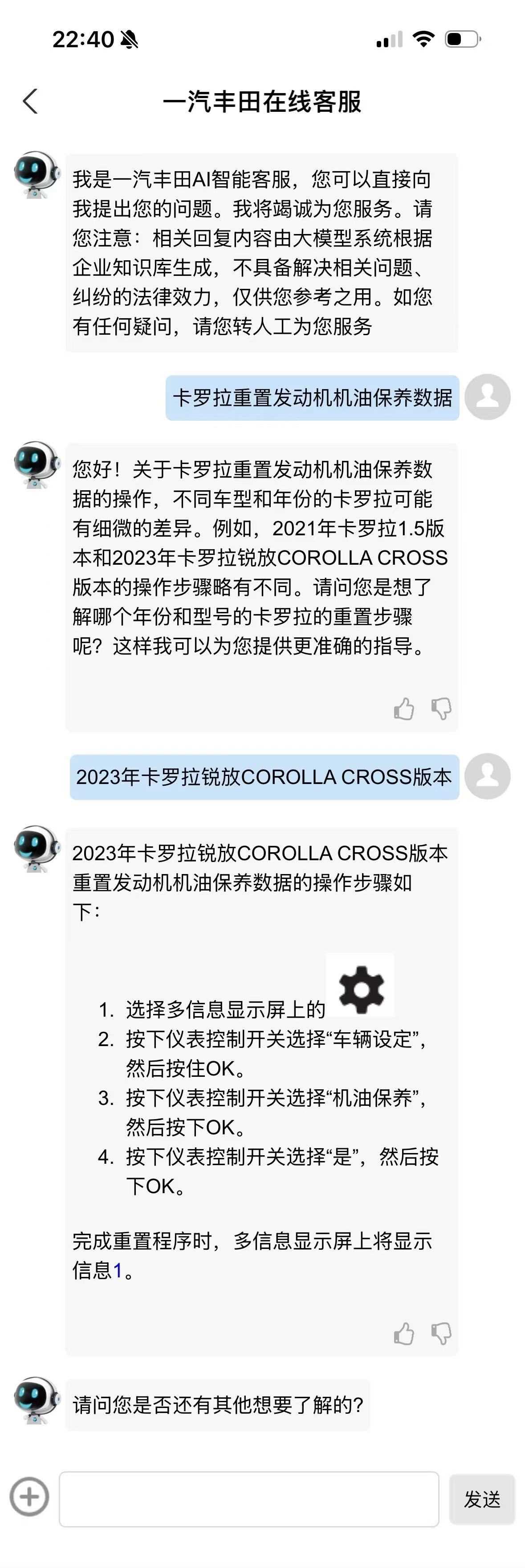From "Building Models" to "Utilizing Models Well," Tencent Aims to Be the Hands for AI Implementation.
Author: Lian Ran

In the intense evolution of the AI industry over the past year, "large models" have almost become the core of all discussions. From parameter scale, inference speed to multimodal capabilities, technical indicators are constantly being refreshed. However, from a calm perspective, the real competition of large models has long surpassed "whose model is bigger and stronger." Standing at the time node of 2025, the key to determining victory lies in whether one can continuously build valuable model capabilities, truly understand complex user scenarios, and ultimately transform these capabilities into "usable" products.
When it comes to "making products" in the internet industry, many people first think of Tencent. However, under the current wave of AI large models, Tencent has remained extremely "low-key" for a long time. Many people only discovered that Tencent's Hongyuan has reached the top tier of global models through the Google I/O developer conference. At this conference in May, Google CEO Sundar Pichai cited the Chatbot Arena rankings, inadvertently exposing Tencent's Hongyuan large model: seventh in the world, second in China, only behind DeepSeek.

Tencent AI's stunning moment was at the beginning of this year. After DeepSeek gained immense popularity, Tencent broke its usual pattern and quickly integrated it; its AI-native application "Yuanbao" iterated at a high frequency with a "daily update" speed, and its daily active users rapidly climbed to the top level in the country within just two to three months, a stark contrast to its previous "slow and steady" state. What kind of chess is Tencent playing between this "fast and slow"?
On May 21, at the Tencent Cloud AI Industry Application Summit, Tencent Group Senior Executive Vice President and CEO of the Cloud and Smart Industry Group, Tang Daosheng, summarized Tencent's direction in AI development with one sentence: "Make AI accessible to everyone and make value within reach." Behind this statement is Tencent's overall mindset in the AI field: not fixated on "who first proposed AGI," not pursuing "creating buzzwords and new concepts," but committed to building a complete, continuously evolving, and solidly experienced AI capability system.
The core of this system is not about "singles" on a specific metric, but about the "co-evolution of models and products." Tencent does not shy away from the importance of models; instead, it consistently emphasizes that models are the foundation of the entire AI capability. In April of this year, Tencent officially established the "Large Language Model Department" and the "Multimodal Model Department," further systematically strengthening its self-developed model capabilities. This also reflects Tencent's adherence to a long-term logic of "small steps, quick iterations" at the foundational technology level.
Tencent's advantages extend beyond the models themselves; they lie in how to long-term accumulate technical capabilities and ultimately translate them into tools that can be genuinely used by users and continuously create value. This reflects a kind of patience at the technical level and a realism from a product perspective.
01 The Core of Tencent's AI Strategy: Not Pursuing "The Largest," but Creating "Usable" Products
Before the emergence of DeepSeek R1, the mainstream approach among domestic giants in the layout of large models was to build large models, large parameters, and achieve "AI closed loops"—self-sufficiency across the entire chain from models, tools to application scenarios.
In contrast, Tencent's strategy appears more pragmatic: not blindly pursuing a competition in parameter scale, but focusing on how to truly transform large model capabilities into accessible, serviceable, and sustainable product forms. From the explosive comeback of Tencent's Yuanbao at the beginning of the year to the recent declaration of "Tencent's various businesses fully embracing AI," it is evident that Tencent is determined to focus on products. Today, creating "usable" AI products has also begun to become a consensus across the industry.
According to Tang Daosheng, this shift stems from the "milestone" change brought by DeepSeek, a transformation from "quantity" to "quality"—"Users have genuinely felt that the 'usability' of AI is further improving during actual use, and AI is crossing the threshold of industrialization, standing at a new node of popular application."
At the recent Tencent Cloud AI Industry Application Summit, he further pointed out that generative AI needs to transition from "usable" to "well usable." This "leap" requires a new round of "acceleration" across four levels: large models, intelligent agents, knowledge bases, and infrastructure.

Tencent Group Senior Executive Vice President and CEO of the Cloud and Smart Industry Group, Tang Daosheng | Source: Tencent Cloud
Specifically, the continuous optimization of model capabilities can lead to stronger performance and better interactive experiences; intelligent agents can think, decide, and execute tasks autonomously based on models; knowledge base systems help reduce hallucinations and enhance contextual understanding, making models "better understand enterprises and users"; and the continuous iteration of underlying infrastructure significantly reduces training and inference costs while improving system response speed. Tencent's structure reflects its ongoing accumulation of understanding "usability" in the process of productization and service.
This "building through use" approach is particularly evident in the evolution of Tencent's self-developed large model "Hongyuan" family. Since its first release in 2023, Hongyuan has continuously iterated, with technical capabilities consistently improving: this year, it has successively launched the Quick Thinking Model Turbo S and the Deep Thinking Model T1, both achieving industry-leading levels in public benchmark tests.
In addition to language models, Tencent is also continuously increasing its investment in multimodal capabilities, advancing the development of various models covering image, video, and 3D generation, as well as image understanding and end-to-end speech models, aiming to provide comprehensive AI support for a wider range of commercial scenarios. The continuous expansion of this capability system enriches the interactive methods supported by models and significantly lowers the user entry barrier for applications.
In addition to the ongoing deepening of its self-developed system, Tencent also insists on "usability" as a goal, actively absorbing high-quality external model capabilities to achieve better combinations. This strategy can be seen in the general AI assistant "Tencent Yuanbao." Yuanbao adopts a dual-engine architecture of Hongyuan and DeepSeek, making it one of the first major products in the country to integrate the DeepSeek model. This architecture is Tencent's strategic integration choice made between performance comparison, scenario matching, and user needs.
Since its launch, Tencent Yuanbao has maintained high-frequency iterations, successively integrating functions such as WeChat file handling, public account content, voice input, and document processing, and supports online search and image understanding capabilities. On the surface, it appears to be a refinement of details, but it actually forms the foundational support for product experience stability and sustainability. Tencent disclosed in its financial report that since February 13, Yuanbao's DAU has increased more than 20 times within a month.
This is not a victory based on a specific model parameter, but a manifestation of a system capability aimed at "delivery."
Tencent is also continuously validating the effectiveness of this system in various self-owned scenarios: the AI assistant in Tencent Meeting can generate meeting summaries and suggestions based on real-time and historical content; Tencent Cloud's CodeBuddy has covered over 85% of the company's development staff, significantly improving development efficiency, with overall coding time reduced by more than 40%; the AI health assistant launched by Tencent Health can automatically interpret health check reports and generate personalized follow-up suggestions.
It can be said that Tencent's AI strategy has never been just about creating "the smartest brain," but is always committed to building a "truly useful assistant."
02 From "Usable" to "Well Usable": Building a Complete Deliverable AI System
Achieving the transition from "usable" to "well usable" relies not on an explosion in a single link, but on the accumulation of capabilities behind a complete technology stack.
Tencent has not attempted to define the boundaries of AI capabilities by parameter quantity; instead, it has systematically built a "deliverable" path from underlying architecture to final experience. Behind this is a highly coordinated technical capability system: covering multimodal interaction, inference optimization, knowledge enhancement (RAG), multi-source data support, high-concurrency processing, cloud security mechanisms, agile development methods, user insight mechanisms, and an open ecosystem for partners.
High-quality content and data are core elements for the usability of large models. In a situation where large model capabilities are converging, this will also be the core area of competition for future AI product capabilities, which is precisely where Tencent can leverage its unique advantages.
Tencent has rich content resources, such as public accounts for text and images, Tencent News, and WeChat Reading; in the video field, there are video accounts and Tencent Video; and in specialized fields, there is authoritative medical popularization like Tencent Medical Encyclopedia. This content data can serve as high-quality information sources for model retrieval, helping to generate high-quality responses. Tencent Yuanbao relies on the content source from public accounts, combined with powerful "online search" capabilities, to ensure the quality and timeliness of retrieval and generation results. According to the SuperCLUE report evaluation, among the ten platforms that have integrated DeepSeek-R1, Yuanbao has the strongest online search capability, ranking first in total score, basic retrieval capability, and analytical reasoning capability.
A high-quality content ecosystem also poses a significant attraction to many domestic model vendors, content, and hardware manufacturers. For example, OPPO smartphones and Xiaomi smart speakers are trying to integrate model capabilities that combine resources like QQ Music in their music Q&A modules to meet users' music needs.
Multimodal capabilities were once seen as a necessary path to AGI, and now they have become an important watershed in product competition. This is also a key battlefield that Tencent is determined to conquer.
Since the early years with Youtu and Tianlai Labs, Tencent has accumulated rich patented technologies in the fields of images, audio, and video. Today, Tencent Meeting is the culmination of Tencent's multimedia technology. In the AI era, Tencent continues to enhance its advantages in multimodal capabilities. On May 21, Tencent announced a series of new multimodal models, with Hongyuan Image 2.0 being the first to achieve commercial-grade real-time live image generation; the visual deep reasoning model T1-Vision supports multi-image input and possesses a native long-thinking chain, easily achieving "thinking while looking at images"; Hongyuan 3D, with the industry's first sparse 3D native architecture, has achieved a generational leap in controllability and ultra-high-definition generation capabilities; and the end-to-end voice call model Hongyuan Voice realizes low-latency voice calls, with significant improvements in personification and emotional application capabilities.
Tang Daosheng has repeatedly expressed the importance of multimodality. He believes that the real world is a complex system composed of multidimensional information. "In the future, AI must possess vision and hearing like humans to understand the world in a three-dimensional and complete manner; beyond text, it should also convey information completely and authentically through tone and actions."
From this perspective, the development of multimodal models is not just a technical expansion but a reconstruction of experience. By incorporating content inputs and outputs in forms such as images, speech, video, and text into a unified model capability, users can interact with AI in simpler ways and receive richer results, significantly lowering the usage threshold. This mode of interaction makes AI no longer just a "geek's toy," but truly popularized to a broader user base.
In addition to being low-threshold and highly interactive, the implementation of models is more importantly about being accurate and reliable. Tang Daosheng has previously stated, "What enterprises need is to truly solve a specific problem in real scenarios, rather than achieving 80% in each of 100 scenarios."
In terms of "making AI more reliable," RAG (Retrieval-Augmented Generation) technology is widely regarded as an effective path to enhance model accuracy and contextual understanding in the short term. Tencent is also one of the earliest cloud vendors to propose and embrace "large models + RAG." Leveraging its long-term accumulation in document parsing, vectorization, and other areas, Tencent has built a structured knowledge enhancement capability that can seamlessly integrate an enterprise's private knowledge base with general models, effectively reducing hallucination rates and improving business understanding depth. This also provides a foundational guarantee for building customized AI assistants for enterprise clients.
Tencent's RAG capability also stems from years of technological accumulation and massive application practice. As early as 2019, Tencent applied vector data retrieval capabilities in over 40 internal business scenarios, including Tencent Video, QQ Browser, and QQ Music, processing more than 160 billion requests daily. With the help of vector retrieval, the search costs for QQ Browser were reduced by 37.9%, and the average listening duration per user on QQ Music, as well as the effective exposure duration per user on Tencent Video, saw significant improvements.
To support a smooth "front-end experience," the underlying infrastructure capabilities are the hidden thresholds that determine scalable implementation. For instance, the training and inference of AI models impose extremely high demands on computing resource scheduling, data flow efficiency, and system response capabilities. Tencent has significantly improved training efficiency and inference performance, while notably reducing response delays and costs, by building an integrated hardware and software infrastructure that includes the Tencent Cloud TI platform, high-performance HCC clusters, GooseFS high-speed storage, and the Xingmai network.
Once the AI system enters real business scenarios, issues such as data privacy, permission control, and traceability become the underlying risks most concerning to clients. Tencent has also leveraged its system scheduling and security capabilities accumulated from serving hundreds of millions of users to build a complete security system covering modules such as identity authentication, data isolation, permission grading, and encrypted transmission. Compared to some emerging players that focus solely on algorithm performance, this "system experience brought by old business" has become a fundamental barrier for Tencent AI to delve into complex industry scenarios.
Therefore, the core logic of Tencent's AI capability system is not just to pursue the "strongest" model itself but to ensure that the model can truly be "delivered." From usable technical capabilities to deliverable system capabilities, and then to a good user experience, the goal is to transform cutting-edge AI capabilities into universal tools. This is also why, when DeepSeek emerged, Tencent was able to become one of the first large companies to complete integration, quickly launch, and operate stably—not because it ran the fastest, but because it had always been preparing to "run longer."
03 From Self-Use to Co-Building: How Tencent Cloud Promotes AI Implementation in the B-End
Tencent's approach in the AI field is not "building behind closed doors," but rather consistently accumulating capabilities in its own scenarios and expanding the market through practical validation. The key that truly supports its entry into the ToB market is not a breakthrough in single-point model capabilities, but the construction of a complete "deliverable" system: not only able to "create AI" but also to "turn AI into a service" and deliver it to clients in a stable and convenient manner.
At this Tencent Cloud AI Application Summit, the newly upgraded intelligent agent development platform and knowledge base products attracted the attention of enterprises and developers. The emergence of these tools has greatly lowered the threshold for AI deployment and increased the coverage of applications.
In an industry where AI intelligent agents are currently receiving much attention, Tencent Cloud's newly upgraded "Intelligent Agent Development Platform" provides enterprises with various modes and supporting tools for building intelligent agents, achieving zero-code support for multi-Agent handover collaboration for the first time, significantly lowering the barriers to building intelligent agents. At the same time, the platform has built a complete set of Agent tool systems, supporting the MCP protocol and key definitions compatible with OpenAI Agents SDK, helping Agents better call tools and expand services.
The construction of enterprise knowledge bases is also a "must-have" configuration for enterprises to implement AI. Tencent's LeXiang Enterprise AI Knowledge Base can break down departmental and hierarchical barriers, manage the effectiveness, update time, and permissions of knowledge, while supporting multi-person collaboration and knowledge co-creation, which not only accelerates the flow of knowledge within the enterprise but also allows AI to better manage and apply enterprise knowledge, producing higher quality content.
In addition, the popularization of model applications has shifted the demand for computing power from training to inference. The cost optimization of large-scale inference has become a core competitive advantage for cloud vendors. Tencent Cloud has also improved the response speed, latency, and cost-effectiveness of models in inference scenarios through collaborative optimization at the IaaS layer and tool layer.
In a recent speech, Tang Daosheng specifically mentioned their successful case of helping Honor Mobile efficiently deploy DeepSeek. Honor Mobile wanted to integrate DeepSeek-R1 services, but as the AI functions in the phone increased, the frequent calls to large models and high concurrency led to high latency in model responses, severely affecting user experience. Tencent Cloud, based on its acceleration capabilities, helped Honor deploy the full-version DeepSeek-R1 service, resulting in a maximum throughput efficiency improvement of 54% for model inference, significantly enhancing inference speed and making model operation faster and more stable, with smoother system scheduling.
Tencent's ToB capabilities go beyond infrastructure support; they are also reflected in its deep understanding of industries and scenarios.
Taking the automotive industry as an example, FAW Toyota introduced Tencent Cloud's intelligent agent development platform into its customer service system to systematically address the common industry challenges of traditional intelligent customer service, such as "inaccurate answers, incomplete answers, and slow responses." Previously, enterprises often faced technical bottlenecks when deploying large models, such as difficulties in retrieving exclusive knowledge and generating overly broad content, making it challenging for AI to truly land. Tencent Cloud, based on its self-developed large model, combined with RAG, self-developed long-text embedding capabilities, OCR, and multimodal components, helped FAW Toyota integrate its exclusive customer service knowledge to build a comprehensive intelligent customer service system covering all channels, including the official website, app, mini-programs, and public accounts.

FAW Toyota's intelligent online customer service robot dialogue | Source: Tencent Cloud
Since the system went live in January this year, the independent resolution rate of intelligent customer service has increased from 37% to 84%, with an average of over 17,000 user questions answered automatically per month, effectively alleviating the pressure on human customer service and improving customer satisfaction. More importantly, FAW Toyota has also leveraged Tencent Cloud tools to extract structured knowledge from historical customer service Q&A, expanding the enterprise's professional knowledge base and laying the foundation for the long-term stable operation of the customer service system.
As an automotive enterprise with annual sales nearing one million and service touchpoints across the country, FAW Toyota's upgrade not only represents a technological transformation but also marks the transition of "AI from experimentation to production." It validates Tencent Cloud AI's "deliverable capability" with tangible results—from model integration, system access to knowledge scheduling and experience closure, every step is measurable, deployable, and iterable, truly achieving the unity of technological value and business value.
What this reflects is not a "experimental application" of AI in a certain industry, but that Tencent is genuinely transforming AI into a new type of productivity that is "deliverable, evolvable, and collaborative" through the paths of tool platformization, knowledge structuring, and natural interaction.
As the AI industry gradually enters the "practical phase," some players that once relied on "technological halo" to stand out are beginning to enter a cooling period, while companies like Tencent, which have long accumulated capabilities and system services, are gradually revealing structural advantages.
Tencent's ability to quickly seize the opportunity presented by DeepSeek and steadily expand the boundaries of the ToB market relies not on a certain model dividend or accidental strategy, but on a systematic understanding of "how to use models well, stably, and to create value."
Its approach does not depend on a single "core algorithm," nor does it rely on a "strategic slogan" for positioning. What supports Tencent AI to reach today is a continuous understanding of user needs, long-term refinement of system capabilities, and a reverence for the logic of scenario implementation.
This, perhaps, is the long-term moat that Tencent has truly built in the AI era.
免责声明:本文章仅代表作者个人观点,不代表本平台的立场和观点。本文章仅供信息分享,不构成对任何人的任何投资建议。用户与作者之间的任何争议,与本平台无关。如网页中刊载的文章或图片涉及侵权,请提供相关的权利证明和身份证明发送邮件到support@aicoin.com,本平台相关工作人员将会进行核查。




